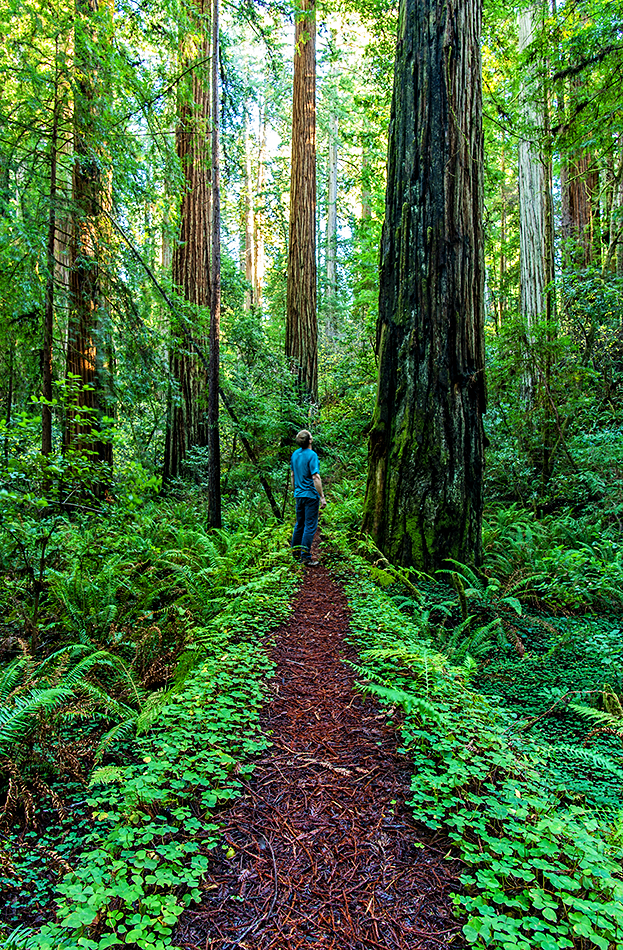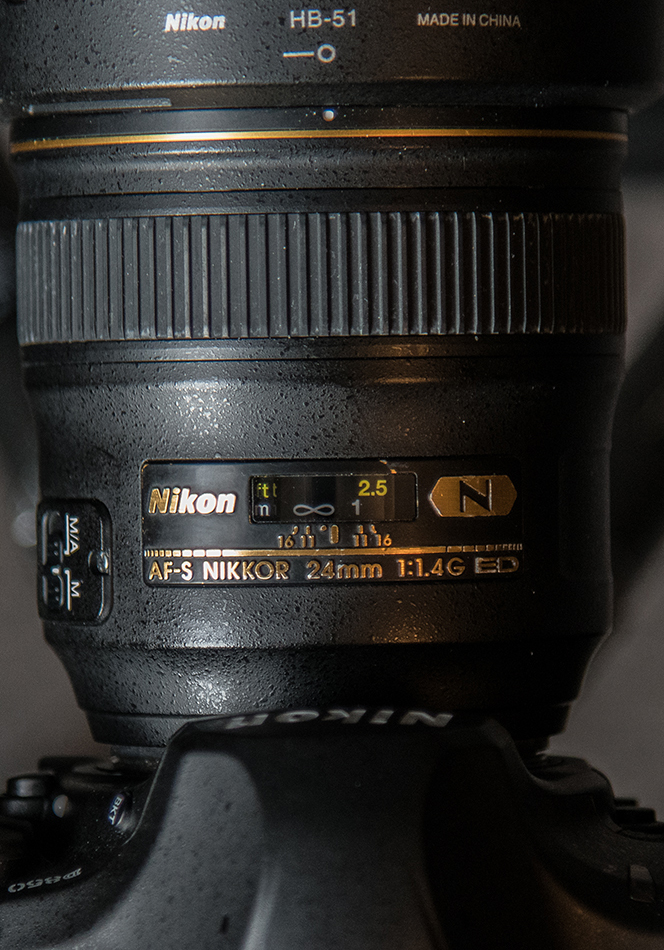
Crescent City, CA. Redwoods.
I’m en route to Patagonia, one of my favorite destinations. The landscape photography there is absolutely stunning; turquoise lakes with snow-capped peaks in the distance are the norm. I’m bringing my trusty 24mm 1.4, one of the best wide angle lenses Nikon makes. And I am going to want to get the best depth of field I can for some of my images. How to do this?
First, the guideline of focusing a third into the frame isn’t really accurate. Many variables including focal length, perspective and subject matter all affect this concept. Better to use tried and true techniques to establish the best focus point for maximum depth of field. Here are three I use regularly.

Hyperfocal Distance: If your lens has a focus guide and aperture scale on the barrel, you are in luck. Simply aline the infinity mark (figure 8 symbol) over the aperture you want to use, most likely F11 or F16 to get the most depth of field. Then look on the other side of the lens and the corresponding aperture mark will show you the closest distance that is in focus, all the way to infinity. The Hyperfocal distance is the actual number the lens focus guide is set on. The image above shows the infinity mark set to about F8. So my lens should produce sharp results approximately from 3.5 feet to infinity. There is some variance with this technique (circle of confusion, temperatures), but I use it regularly with my 24mm with excellent results.
Depth of field Preview: Does anyone use this anymore? I do! Many cameras have a button that closes down the aperture to the actual f-stop and will show you in real time exactly what is in focus. The viewfinder gets dark when the aperture closes, but just give your eye a moment to adjust and then really see what you depth of field is going to be.
Image Preview: You can also just take a shot and zoom in to 100% to check the foreground, middle ground and background to see how your focus is and if you have enough depth of field. Try using a loupe to really see the acuity of your image.
There are some nice phone apps that will also help to calculate depth of field, but for sweeping landscapes I use one of the above techniques. There are other things to consider as well. Most lenses perform their best at the middle apertures. Using small apertures like F22 may introduce large amounts of diffraction, which will affect the sharpness of your image. So the question becomes just how much depth of field do you really need and to choose the appropriate aperture. My 24mm performs best around F4, which may be fine for distant scenes with no close foreground. But I use F11 or even F16 if I need the extra foreground sharpness. Lens performance are very revealing. The 24mm F1.4 isn’t as sharp as the 20mm F1.8 in the center, but the middle and edge sharpness is remarkable. Combine the consistent sharpness across the frame with fantastic color and contrast, and you see why this lens is legendary for Nikon shooters.